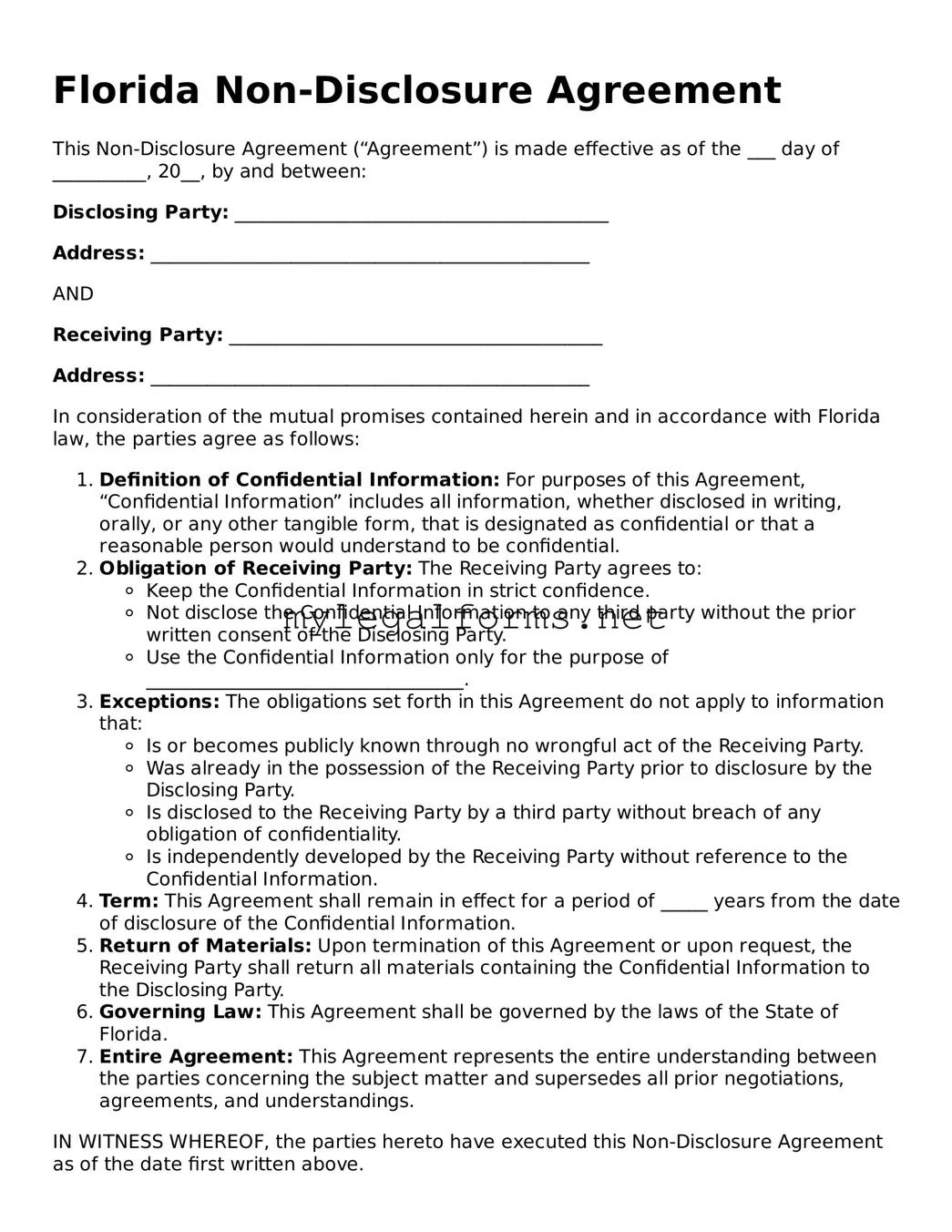Florida Non-Disclosure Agreement
This Non-Disclosure Agreement (“Agreement”) is made effective as of the ___ day of __________, 20__, by and between:
Disclosing Party: ________________________________________
Address: _______________________________________________
AND
Receiving Party: ________________________________________
Address: _______________________________________________
In consideration of the mutual promises contained herein and in accordance with Florida law, the parties agree as follows:
- Definition of Confidential Information: For purposes of this Agreement, “Confidential Information” includes all information, whether disclosed in writing, orally, or any other tangible form, that is designated as confidential or that a reasonable person would understand to be confidential.
- Obligation of Receiving Party: The Receiving Party agrees to:
- Keep the Confidential Information in strict confidence.
- Not disclose the Confidential Information to any third party without the prior written consent of the Disclosing Party.
- Use the Confidential Information only for the purpose of __________________________________.
- Exceptions: The obligations set forth in this Agreement do not apply to information that:
- Is or becomes publicly known through no wrongful act of the Receiving Party.
- Was already in the possession of the Receiving Party prior to disclosure by the Disclosing Party.
- Is disclosed to the Receiving Party by a third party without breach of any obligation of confidentiality.
- Is independently developed by the Receiving Party without reference to the Confidential Information.
- Term: This Agreement shall remain in effect for a period of _____ years from the date of disclosure of the Confidential Information.
- Return of Materials: Upon termination of this Agreement or upon request, the Receiving Party shall return all materials containing the Confidential Information to the Disclosing Party.
- Governing Law: This Agreement shall be governed by the laws of the State of Florida.
- Entire Agreement: This Agreement represents the entire understanding between the parties concerning the subject matter and supersedes all prior negotiations, agreements, and understandings.
IN WITNESS WHEREOF, the parties hereto have executed this Non-Disclosure Agreement as of the date first written above.
Disclosing Party Signature: __________________________
Date: __________________________
Receiving Party Signature: __________________________
Date: __________________________
